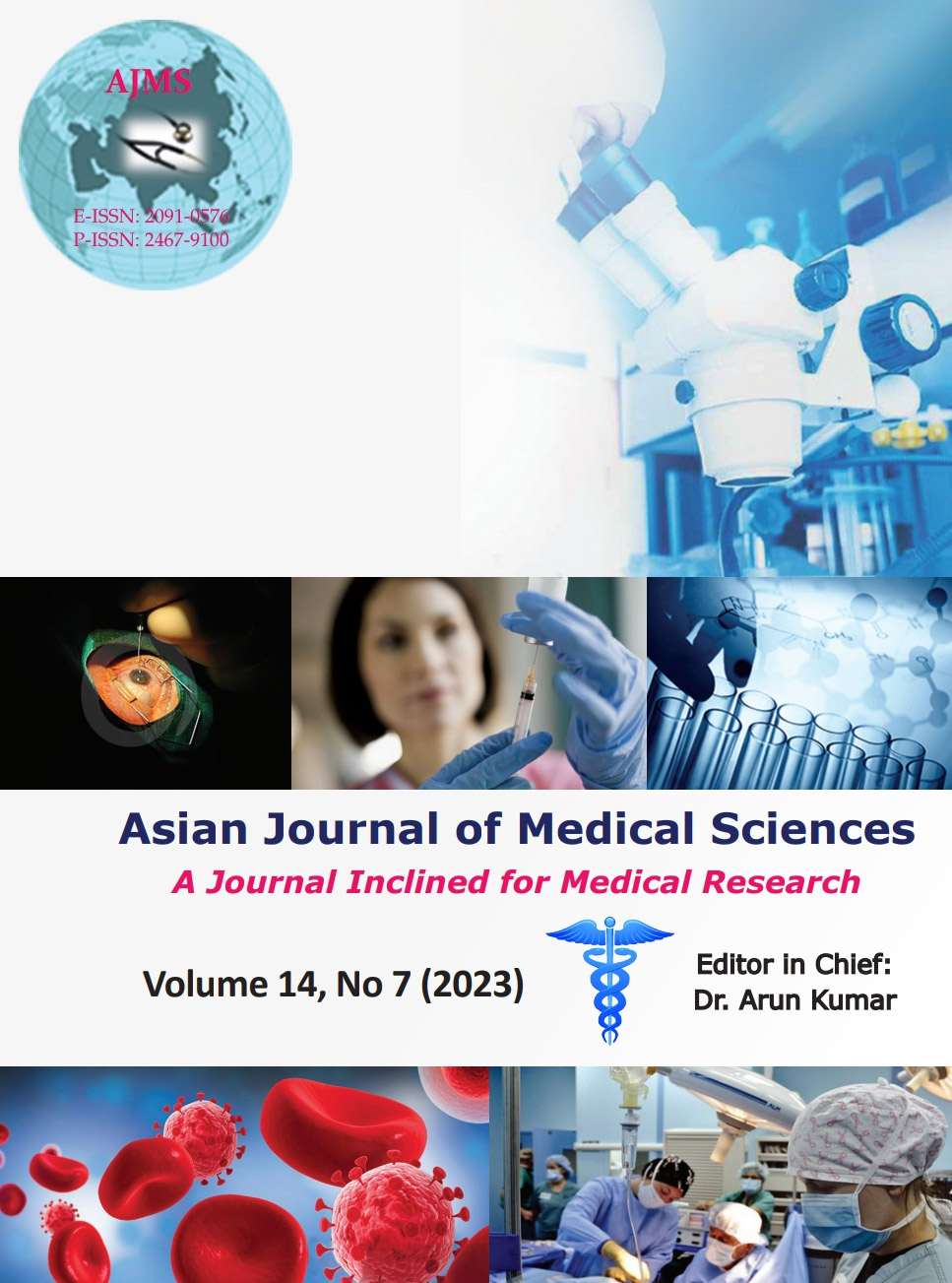Histomorphological features and IHC expression in endometrial and endocervical adenocarcinoma
Keywords:
Endometrial adenocarcinoma; Endocervical adenocarcinoma; Serous carcinoma; Estrogen receptor; Vimentin; P16; Carcinoembryonic antigenAbstract
Background: The distinction of endometrial adenocarcinoma (EMA) from endocervical adenocarcinoma (ECA) has great significance preoperatively, since the therapeutic plan depends on the primary site of tumor. Immunohistochemistry (IHC) is an ancillary method in distinguishing primary EMA and ECA, especially in cases of histomorphological overlap.
Aims and Objectives: Primary objective of this study was to describe the expression of IHC markers–estrogen receptor (ER), vimentin, monoclonal carcinoembryonic antigen (CEA), P16 in EMA and ECA. Secondary objective of this study was to describe the histomorphological features of EMA and ECA.
Materials and Methods: This is a descriptive study done at the Department of Pathology, Government Medical College, Kottayam between November 2019 and May 2021. The sample size was 54 which included primary adenocarcinoma diagnosed on curettage biopsies. IHC was performed using ER, Vimentin, P16, and mCEA. A semiquantitative scoring was done using the German IHC scoring system.
Results: Histomorphological features and IHC expression in EMA and ECA were studied. Percentage of cases with expression of IHC markers is as follows. In endometrioid EMA-ER in 100% of cases, Vimentin 83.3%, P16 0%, and CEA in 7.3% cases. About 80% of serous carcinomas showed P16 and vimentin positivity with negative staining for ER and CEA. In ECA-ER in 0% cases, vimentin 16.7%, P16 80%, and CEA in 66.7% of cases. Based on histomorphologic appearance, the common histologic subtype of EMA was endometrioid EMA followed by serous carcinoma. In ECA, the usual type was more common than gastric type.
Conclusion: IHC markers-ER, vimentin, P16, and CEA are useful in distinguishing endometrioid EMA and ECA.
Downloads
Downloads
Published
How to Cite
Issue
Section
License
Copyright (c) 2023 Asian Journal of Medical Sciences

This work is licensed under a Creative Commons Attribution-NonCommercial 4.0 International License.
Authors who publish with this journal agree to the following terms:
- The journal holds copyright and publishes the work under a Creative Commons CC-BY-NC license that permits use, distribution and reprduction in any medium, provided the original work is properly cited and is not used for commercial purposes. The journal should be recognised as the original publisher of this work.
- Authors are able to enter into separate, additional contractual arrangements for the non-exclusive distribution of the journal's published version of the work (e.g., post it to an institutional repository or publish it in a book), with an acknowledgement of its initial publication in this journal.
- Authors are permitted and encouraged to post their work online (e.g., in institutional repositories or on their website) prior to and during the submission process, as it can lead to productive exchanges, as well as earlier and greater citation of published work (See The Effect of Open Access).




